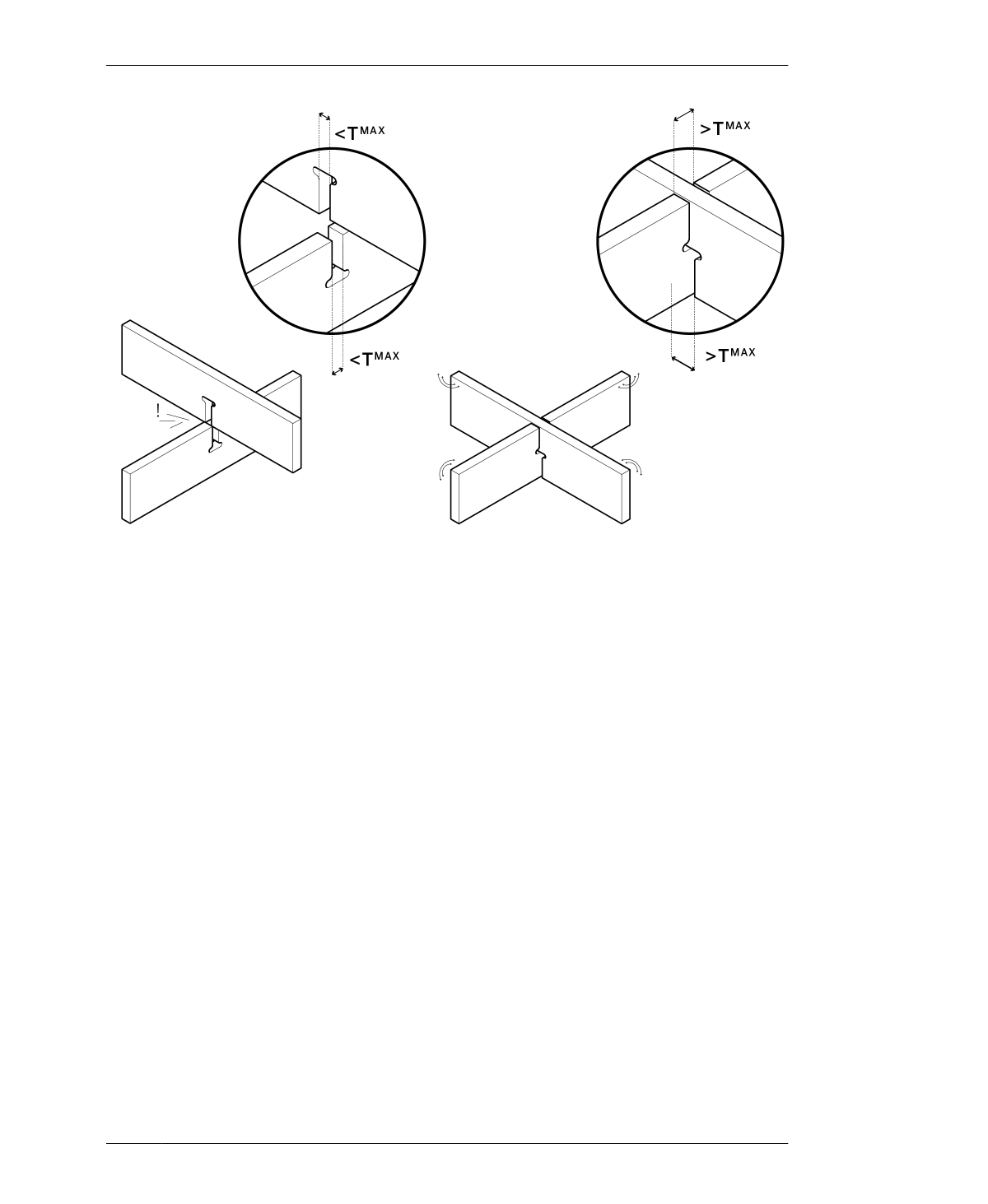
PROTOTYPING
FIGURE 5-9
Joinery fit: too tight
versus too loose
Preliminary fabrication tests prevent the disap-
pointment and waste that comes from cutting
an entire piece of furniture with incorrect set-
tings. Each project’s test piece was designed to
use as little material as possible, but still be
large and detailed enough to allow a thorough
analysis of all the joint conditions within the fur-
niture piece.
To ensure that your test piece properly simu-
lates the critical joinery of your project, it’s
essential to fabricate it exactly as you would
the actual furniture piece. First, you apply iden-
tical scaling adjustments (S) to the 2D test
piece vectors in CAD (as explained in “Scale
Your CAD File” on page 133). From there, you’ll
assign identical toolpath settings in CAM soft-
ware (which will be explained in “Partial Proto-
typing: Using a Test Piece” on page 212), and
proceed to cut the test piece from the exact
material that you’ll be using for the actual
piece.
Most of the time, these careful steps lead to a
test piece with perfectly fitting joinery, enabling
you to confidently proceed with cutting your
project. When joints aren’t perfect, however,
the test piece is small enough to quickly make
digital adjustments, cut another test piece, and
compare the new fit to the previous one
(“Troubleshooting” on page 202 goes into
greater detail with these steps). The beauty of
prototypes is that they enable the iteration
that’s necessary for flush joinery, the hallmark
of digital craftsmanship.
SCALE PROTOTYPES
Scale prototypes are small-scale versions of a
design, cut with a desktop CNC or laser cutter
out of inexpensive materials like cardboard,
plexiglass, or aircraft plywood. They differ from
partial prototypes in that they can be used ear-
lier in the design process. If you have access to
a laser cutter at your workshop or fabrication
05/PRECISION-FIT PLYWOOD JOINERY
137
